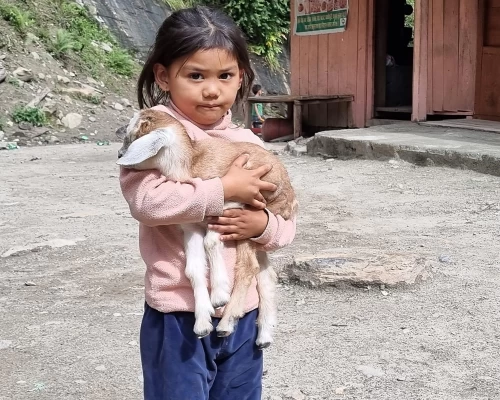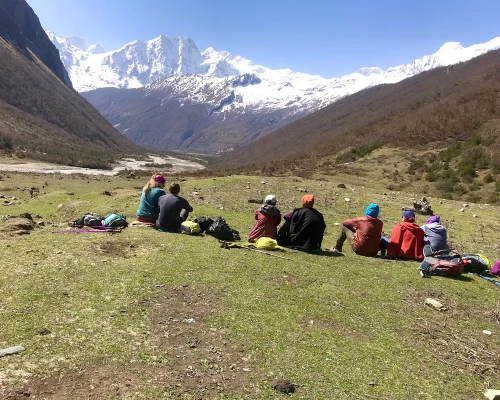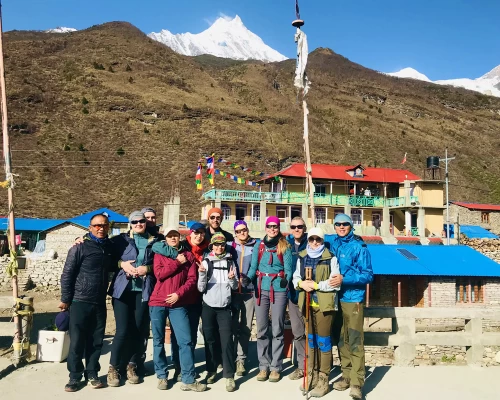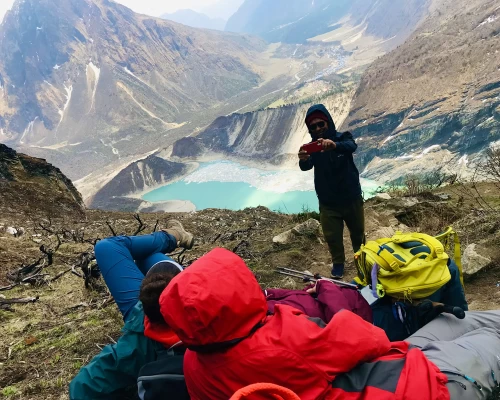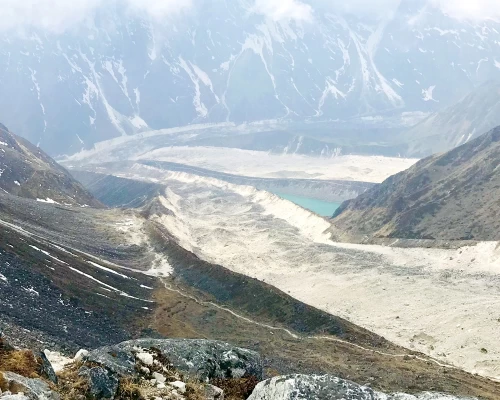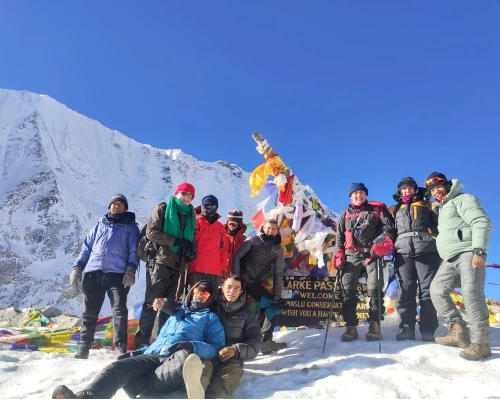‘An exciting adventure around far North Mid-West Himalayas’
Tsum Valley and Manaslu Circuit Trekking combine remote regions in the Midwestern Himalayas. This journey takes us to hidden locations of the Gorkha district located between Nepal and China.
Our journey towards Tsum Valley and Manaslu Circuit trekking is one of the best adventures we can experience. This journey takes less than three weeks. During these three weeks, it takes us to the previously hidden locations in the Tsum Valley. This includes the journey through the Upper Manaslu region following the trail of the Trans Himalaya Salt Trade Route. Back in the day, they had yaks, mules, and horses to carry things from Nepal and Tibet through the Tsum and Manaslu valleys.
The Upper Manaslu in the northern Himalayan region of Gorkha district was closed for centuries. However, they were opened to outside visitors and travelers in 1992. Similarly, Tsum Valley was unknown to the outside world before 2008. After that, foreigners were allowed to experience the natural beauty of the Shangri-La around Tsum Valley.
This beautiful town, also known as the Valley of Happiness, is mentioned in old Tibetan texts. Famous saints and Gurus of Tibet also mention it as a hidden land. In these texts, Tsum Valley is a land where humankind can flourish, yield high-altitude crops, and rear livestock.
Tsum Valley and Manaslu Circuit Trek is an exciting journey to experience the ancient Buddhist Culture. In addition to the way people in Tibet have always done things, the hills and valleys here are very pretty. This lovely country lets us discover its hidden beauty, a secret for many years.
The journey begins in the low farmland of Gorkha. From there, our journey follows the Budhi Gandaki River Upstream. After leaving the farm villages, the next phase is the climb. This climb leads us into the cooler hills. The hills are covered with pine forests and rhododendron trees. After leaving the main trail, this first part of the journey takes us east towards Tsum Valley.
After leaving the trail, we step into the previously forbidden nation. It greets with the view of beautiful snow-capped mountains and impressive cultures. We continue our journey by crossing several bridges through Chumling, Chokang-Paro, and Nile villages. Here, we get plenty of time to explore these villages, filled with ancient heritages and cultures.
The trail continues east towards Mu Gompa, leaving the lush vegetation. Mu Gompa is the highest spot on Tsum Valley Trek and a prime religious location. This location is situated in a beautiful location behind the northern face of Ganesh Himal. The Ganesh Himal is also known as Yangra by the Tsumbas. Tsumbas are the natives of this location with centuries of history and culture.
From this point, our journey continues towards the beautiful Manaslu Circuit. After leaving Tsum Valley, we head to the scenic Manaslu Valley with Mount Manaslu in the background.
Mount Manaslu is the eighth-highest peak, standing above 8,163m/ 26,781 feet high. A Japanese team first conquered this mountain on May 9, 1965 AD. Nepali guide Gyalzen Norbu Sherpa supported this team. This journey takes us around the highest point of Mount Manaslu through many traditional villages.
From here, we follow the main villages of Manaslu villages, Lo and Sama-Gaun. We can enjoy the stunning views of the snow-capped Mount Manaslu as we continue our journey. After reaching the end of Manaslu Valley and Gorkha District, we climb to the peak of Larke-La Pass.
Our path from here consists of a steep and tough journey as beautiful peaks surround us. At this point of our journey, we can enjoy the breathtaking panoramic view of Mount Manaslu. We can also enjoy the beautiful views of Mount Annapurna and Ganesh Himal towards the east.
After conquering Larke-La Pass, we descend to Bhimtang. It is a small settlement, perfect for overnight rest after a long journey.
From Bhimtang, we head towards Tal Besi through Tilije and Dharapani villages. Our final day of trekking follows the Marsyangdi River downstream. After reaching the calm village of Tal Besi, we rest for the night.
Our journey concludes at Tal village. It is both the starting and ending point of Manang district. After this, we drive back to Kathmandu through the lower farm area of Lamjung and Besisahar town. Our drive continues on the main highway before reaching Kathmandu city.
Once we reach Kathmandu City, our journey concludes, filled with a rich experience of Tsum Valley and Manaslu Circuit Trekking.
Read this next:



